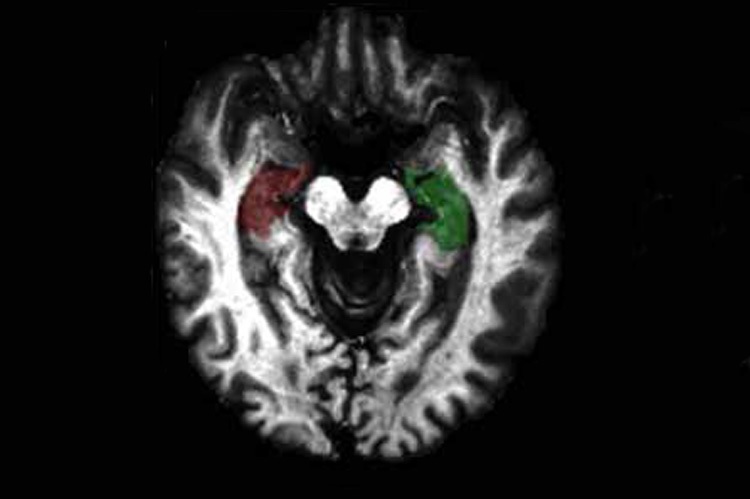A brand new study, reported by scientists at Berkeley and UCSF, adds significantly to our understanding of the effects of acute trauma on the brain.
Particularly, increased myelin in the gray matter of veterans with PTSD.
Here’s the gist:
Scientists took MRI brain scans of 38 veterans. Half had PTSD, half didn’t.
The brain scans (see above) showed increased myelination in the gray matter in those with PTSD, compared to those without PTSD (Click here for more on myelin and myelination).
In fact, the worse the symptoms of PTSD, the more myelination in the gray matter.
Why does that matter?
Well, from studies of rats, the researchers have found that increased myelin in the gray matter has very real effects on behavior, depending on the specific region of gray matter where its found.
The same was true for the group of veterans.
This helps explains why some people with PTSD are hyper-avoidant and others, hyperreactive, for example.
The trauma might be the same, increased myelination is happening, but those elevated levels are happening in a different region in the gray matter.
Thus, one’s particular set of symptoms seems to depend on where their gray matter is seeing increased myelination.
If I’m hyper-avoidant and you’re hyperreactive, then there’s probably increased myelination in different parts of our gray matter.
That’s what both the study of vets with PTSD and rats, subjected to acute trauma, found.
Senior author, Dr. Thomas Neylan, explained in a news release:
*****************************************************************************************************************************
“If experience leads you to start to lay down myelin to strengthen certain connections, let’s say your ability to respond quickly to a fearful stimulus, you can speed up that circuit, but you lose the kind of broader adaptive flexibility that you normally would have with mostly unmyelinated axons and dendrites.
People with PTSD become almost like a one-note musician — they really know how to respond to fear. But that enhanced, quick response to fear may diminish their adaptive flexibility for non-fear-type behavior.”
*****************************************************************************************************************************
It’s absolutely crucial for the Christian church to be aware of studies like these, to look at actual MRI scans, to recognize the pain, and the source of that pain.
If you’re experiencing symptoms of PTSD and the church is stigmatizing you for being “fearful,” here’s a great idea (though not particularly realistic).
Make a church date for everyone to get MRI scans!
Have a neuroscientist point out those with increased myelination in the gray matter, and those without, and then have a group discussion.
Why do we laud some Christians as having superior boldness and confidence?
Why do we judge some Christians as weak and timid?
Why do we judge anyone when their brains are so different from ours?
Why do we judge anyone for any mood disorder?
And finally and most compellingly…
Why do we judge anyone when our Lord and Savior tells us not to.
If you’ve been judged by other Christians as “fearful,” “not living in faith,” and all that other stuff — my heart goes out to you. I’ve been judged for the same.
But studies like this show we’re battling medical conditions others aren’t, and the Lord knows what the others don’t, and he is close to you.
Charles Spurgeon, in an 1890 sermon called “The Tenderness of Jesus” said, “Jesus is touched, not with a feeling of your strength, but of your infirmity….as the mother feels with the weakness of her babe, so does Jesus feel with the poorest, saddest, and weakest.”
Spurgeon is right on everything, except this. You’re not weak if you struggle with a mood disorder (Would we ever call a paraplegic weak?). You might feel weak, others might call you that, but the strongest people on earth are those who keep living on earth, despite their despair.
Find a psychiatrist here.
Find a therapist here.
[Photo: Via UCSF, that’s the fMRI scan of a military veteran with PTSD. The red and green represent the gray matter regions with increased myelin].

